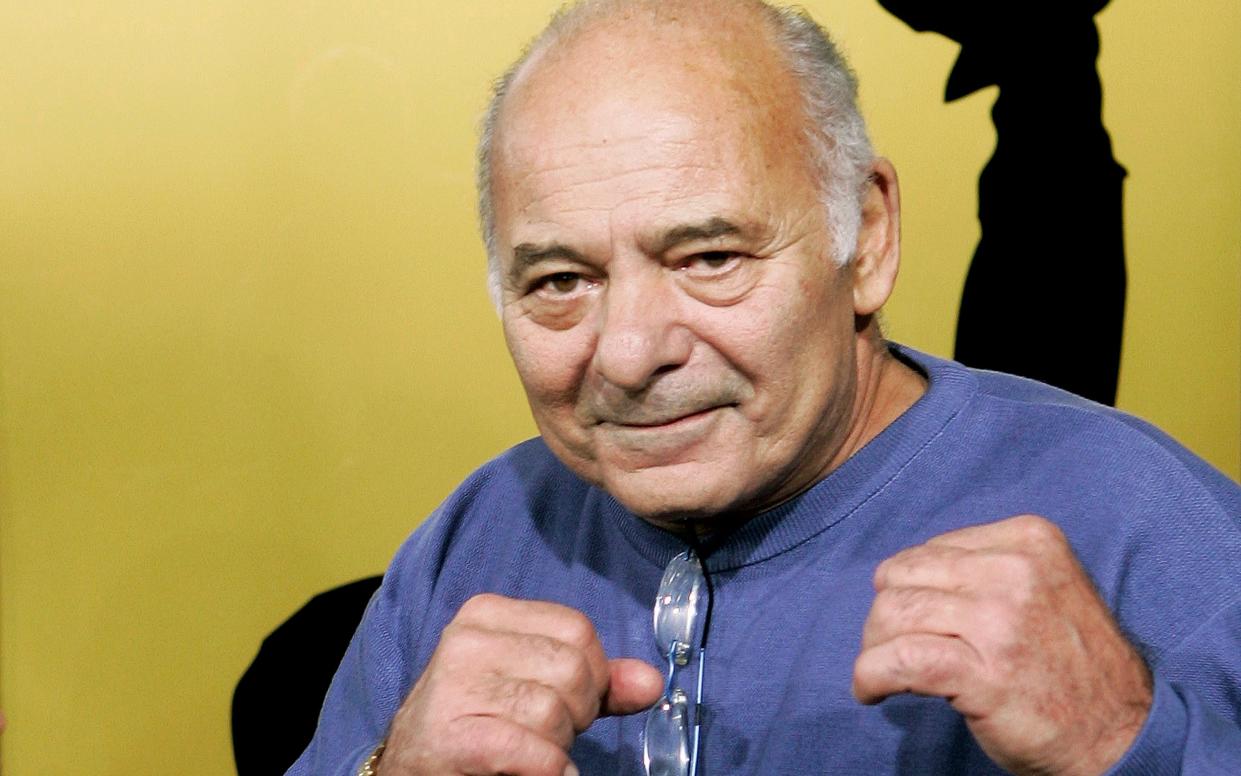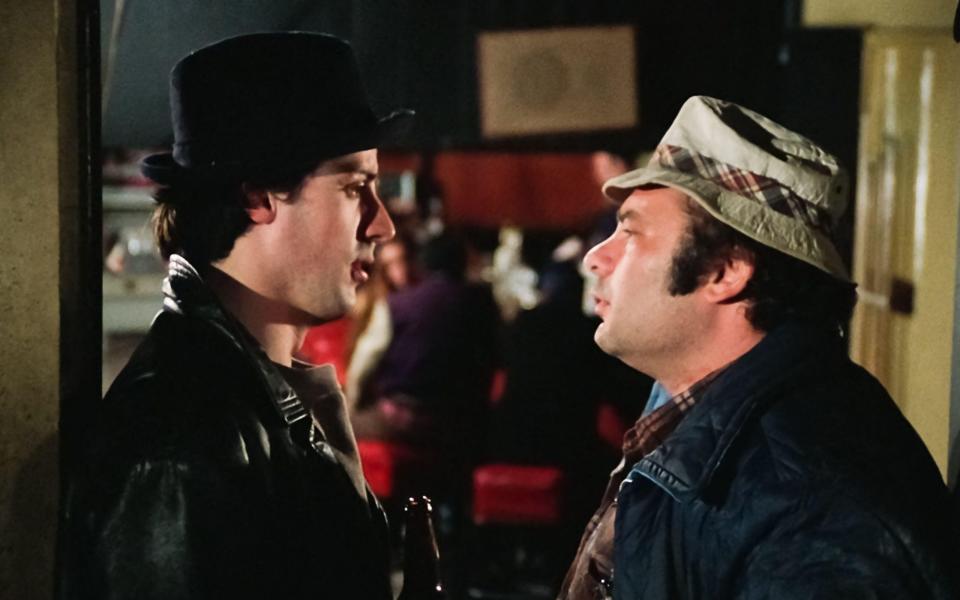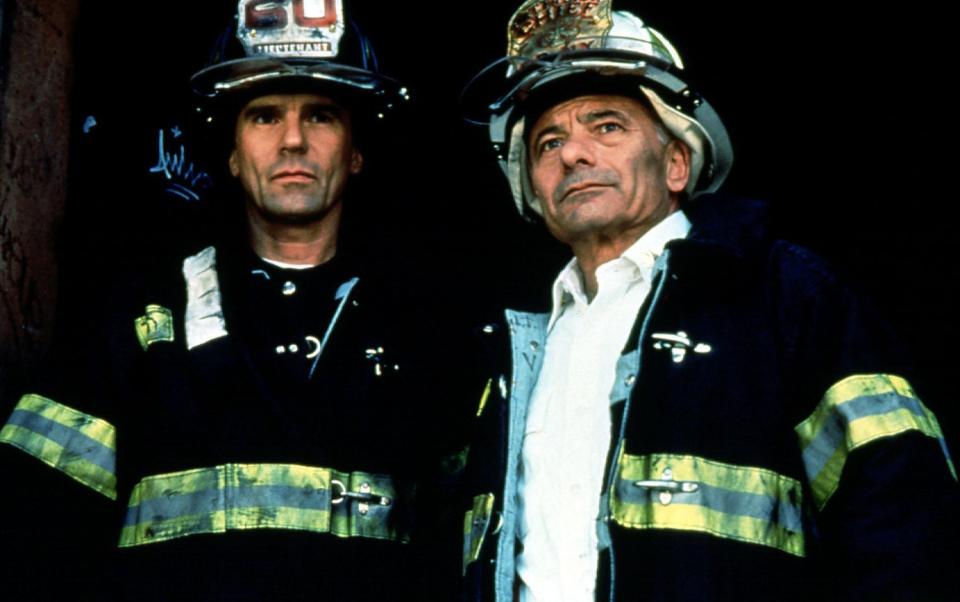Burt Young, actor who found fame as Sylvester Stallone’s closest friend in the Rocky film series – obituary

Burt Young, who has died aged 83, received an Oscar nomination for his role as Paulie Pennino, Sylvester Stallone’s cigar-chomping alcoholic butcher friend, in Rocky (1976); as a kind of amiable moral compass to Stallone’s mumbling pugilist, Young made himself an indispensable part of the package, returning in all five Rocky sequels.
His combination of unflinching naturalism, frame-filling bulk and a wrong-side-of-the-tracks face proved catnip for directors of American gangster films. His credits include Sergio Leone’s weighty Once Upon a Time in America (1984) with Robert De Niro, the black comedy The Pope of Greenwich Village (also 1984), starring Mickey Rourke and Daryl Hannah, and the sordid sex-and-violence-laden Last Exit to Brooklyn (1989). He also appeared in a terrifyingly memorable episode of The Sopranos in 2001, playing an elderly mobster dying of cancer.
By his own account Young was the only actor who did not have to audition for Rocky, having once been a boxer himself. His manager was Mike Tyson’s former trainer Cus D’Amato, and he was friends with Muhammad Ali, who declared that “Baldy Paulie will go down in two” when the pair fought a charity match in the 1990s. “It was three rounds,” Young insisted.
He claimed that Stallone begged him to appear in Rocky, telling the Rumpus website: “He comes up to me at MGM. I’m having a meeting with somebody. He kneels down next to me. He says, ‘Mr Young, I’m Sylvester Stallone. I wrote Rocky.’ I said, F***ing congratulations. You did a great job. ‘But you’ve got to do it, please,’ he said. ‘You gotta’.”
Young proved to be a natural, even if the saga’s sequels grew increasingly indulgent. In Rocky II his sister Adrian (Talia Shire) marries Rocky but gives birth prematurely when Paulie shouts at her. Rocky III opens with Rocky rescuing Paulie from a police cell after he has smashed up an amusement arcade machine. In Rocky IV Paulie accompanies his brother-in-law to a remote Soviet training base, but in Rocky V he causes his friend’s bankruptcy. By the time of Rocky Balboa (2006) Paulie is back where he started, in an abattoir, but is laid off and returns to the 60-year-old Rocky’s side as he makes a comeback in the ring.
“I’m not Paulie,” Young told Newsday in 2007. “But there’s a part of Paulie in all of us… cowardice, bravado, false bravado. And I knew how to beat the drum to make the guy interesting and ugly and pathetic.”
He was born Gerald Tommaso DeLouise into an Italian family in the Corona district of Queens, New York, on April 30 1940, the son of Michael DeLouise, a high-school metalwork teacher, and his wife Josephine. He changed his name to Richard Morea and later adopted the stage name Burt Young.
His father wanted to remove him from the rougher end of the neighbourhood and sent him to Bryant High School in Astoria, “away from my Corona pals”, he wrote in a history of Corona. He was thrown out but then lasted only a term at St Ann’s Academy, Manhattan.

At 15 he dated a woman who was married with two children but fought with her husband. To escape he enlisted in the Marines – “my pop fibbing my age to get me in” – but was detained after starting a mini-riot among anti-American protesters outside the US base at Okinawa in Japan. “The Okinawa brig at that time was the worst, people go nuts in there,” he recalled.
He took up boxing with the Marines, winning 32 of his 34 fights. After a dishonourable discharge he turned professional, winning a further 14 or 17 bouts, depending on the version he was telling. “I got a scar here from Springfield, Massachusetts,” he told the Los Angeles Times, pointing to a line above his jaw. “And see these teeth? Sunnyside Gardens.”
There was little money in boxing, his biggest payday being $400. Instead a cousin in New York offered him work in his lending business but “gave me all his bad accounts”; he then started a silkscreen business that went bankrupt, tried carpet cleaning and ran a gambling outfit. “I was in every business in the world that didn’t have an inventory,” he said. “Anything that required sweat and a lot of bravado.”
Although married, Young became infatuated with a barmaid called Norma who wanted to act. To impress her he wrote to Lee Strasberg at the Actors Studio. When they met, Strasberg suggested that it was he who had a future in acting; Norma suffered from stage fright.

His first role was as a monsignor in an off-off-Broadway play. The launchpad for his big-screen career was an uncredited part in the army prison drama The Hill (1965) with Sean Connery. “He didn’t have to give me the time of day but we had some nice conversations and I learnt a lot from him and that film,” he told The Scottish Sun.
Other early roles included Roman Polanski’s Chinatown (1974), in which he played a cuckolded fisherman in the opening scene, the crime drama The Gambler (also 1974) with James Caan, and Sam Peckinpah’s thriller The Killer Elite (1975). Throughout the Rocky years he continued appearing elsewhere, including as a truck driver in Peckinpah’s interminable car-stunt film Convoy (1978), starring Kris Kristofferson and as a corrupt match-rigger in Robert Aldrich’s female-wrestling movie All the Marbles (1981).
At the age of 11 Young had taken up painting, and a year later won a New York competition. He returned to the easel throughout his life and some of his paintings appear in Rocky Balboa. He did not return for the 2015 Rocky reboot Creed or its sequels, with Paulie said to have died in 2012. However, he kept in touch with his former colleagues, saying: “I would rather have had Stallone’s part, but he wrote the thing and I got the next best part.”
A compact, bull-like figure with a taxi-driver’s paunch and Popeye-like forearms, Young continued to work out, bashing a punchbag at the gym and swinging a sledgehammer around his backyard. That done, he tackled a glass of whisky and three packs of unfiltered Camel cigarettes a day. At one time he bought a restaurant in the Bronx and named it Burt Young’s Il Boschetto. Latterly he lived quietly on the north shore of Long Island with his paints.
Acting, he said, was nothing compared with his visits to the boxing ring. “To go into Massachusetts with no trainer or manager was something,” he told the LA Times. “The guy in the other corner always looked twice as big. Walking up those steps was like going to the electric chair.”
Like Paulie, Young was a self-described regular guy, not much into conversation but big on family ties, protective of his privacy and never forgetting his roots. His wife Gloria, whom he married in 1961, died in 1974. He dated his Rocky co-star, Talia Shire, “for the blink of an eye”, and by the 1990s was involved with a blond dermatologist. “I adore women,” he told a website. “I’m pliable, like a piece of clay, a Labrador. I’m not smooth, I just drool.”
He is survived by a daughter from his marriage, the actress Anne Morea; they appeared together in a 1995 Los Angeles staging of Arthur Miller’s tragedy A View from the Bridge.
Burt Young, born April 30 1940, died October 8 2023

 Yahoo News
Yahoo News 
